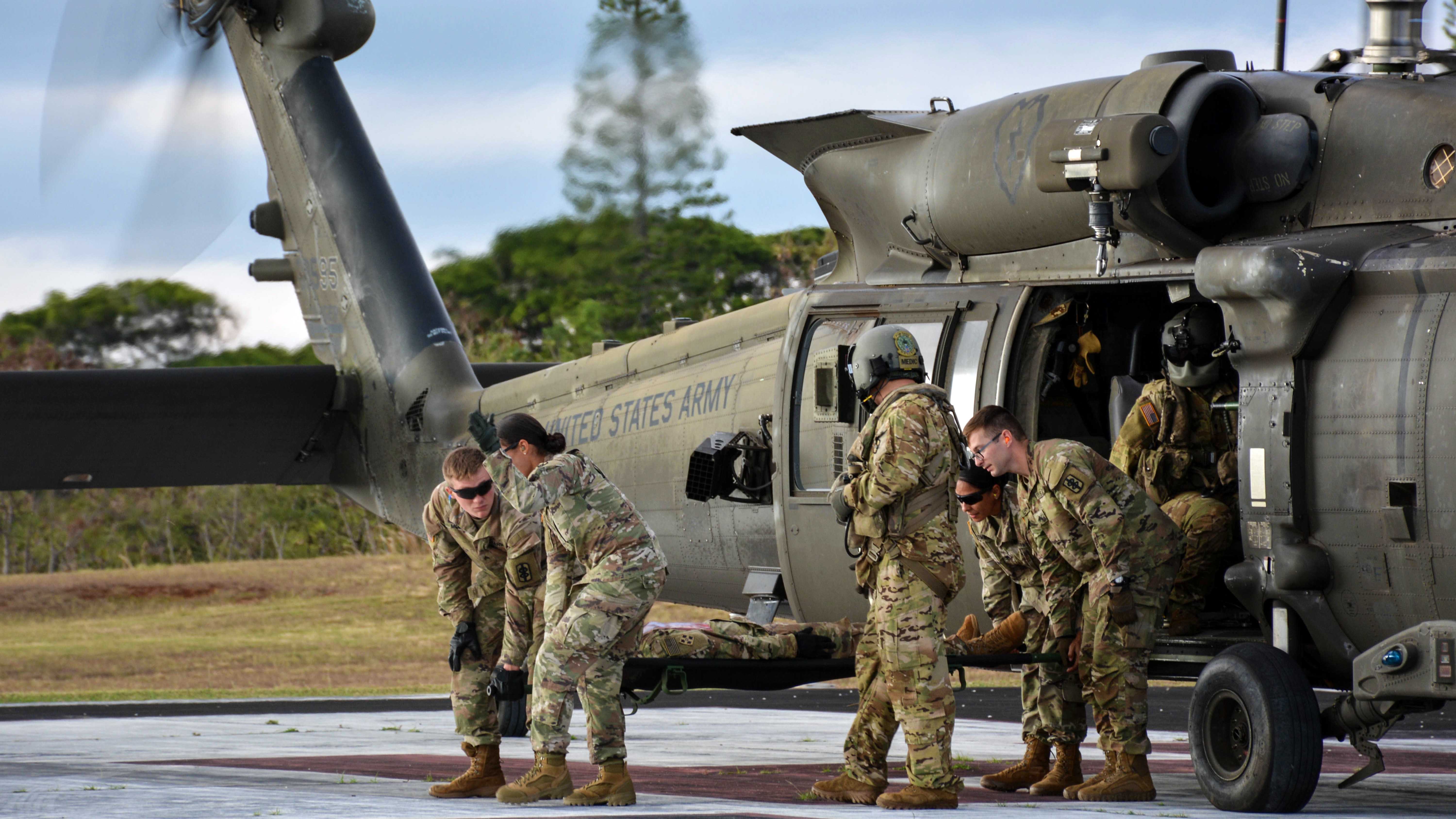Multidomain War Presents New Medical Challenges
Multidomain War Presents New Medical Challenges

The ability to quickly return to duty wounded or sick soldiers in a multidomain operations environment will be one of the top priorities for Army medical personnel, a senior medical officer said.
Maj. Gen. Joe Robinson, commander of the Army Reserve’s 3rd Medical Command (Deployment Support), said the increased lethality of weapons, combined with cyber threats that could lead to loss of communications, will restrict patient evacuation and cause resupply challenges, making it critical that medical personnel return soldiers to duty as quickly as possible “in order to restore combat power.”
“Returning soldiers to duty is the most significant contribution that the Army health system has for the fighting force,” Robinson said Dec. 7 during a panel discussion on Army medicine in multidomain operations at the Association of the U.S. Army’s Medical Hot Topic titled “Holistic Health and the Soldier.”
To do this, the Army must be able to quickly stabilize and clear casualties from the battlefield while maximizing soldiers’ ability to return to duty, Robinson said, pointing out that medics and physicians could be dealing with the same casualty numbers as those during World War II. “If we can’t move them, we’ve got to be able to take care of them where they are,” he said.
With mass casualties, he noted, medics will be stretched thin and could run out of supplies more quickly, particularly if units are spread out across a large battlefield. Setting up hospitals will present problems as they have a big footprint and are hard to hide from electronic threats. Even providing banks of portable toilets as the Army did in Iraq and Afghanistan may not be possible as they create their own footprint and must be maintained.
“When you have a soldier complain that they don’t have enough port-a-potties at their [location], maybe we need to reissue the entrenching tool and have them get a lesson in slit trenching,” Robinson said.
He noted that disease, non-battle injuries and other significant threats, such as chemical, biological, radiological, nuclear and high-yield explosives attacks, will become challenges for Army medical personnel as they operate in sub-optimal conditions.
Other priorities for Army medicine in multidomain operations include a healthy and fit force, protecting the force from health hazards, evacuating patients and enabling freedom of maneuver, “because in the war to come,” Robinson said, “if you stand still, you open yourself up to a lot of bad things.”
On a positive note, Robinson said innovations in technology will help support the modernization of Army medicine capabilities. The development of diagnostic devices, synthetic blood and 3D printers that can create body parts such as jaws and joints “are all innovative things that will come through Army medicine,” he said.
On a dispersed battlefield with all environments being contested, he said, Army medicine will have to be geographically positioned to provide the best support, build partner medical capabilities that are interoperable with U.S. capabilities, create a medical logistics system that can provide support far forward and be able to operate in dense urban terrain with a joint force.
“We need to be able to operate effectively in an austere environment, and we need to be able to attract, train and retain quality, physically fit and mentally fit people,” Robinson said.

